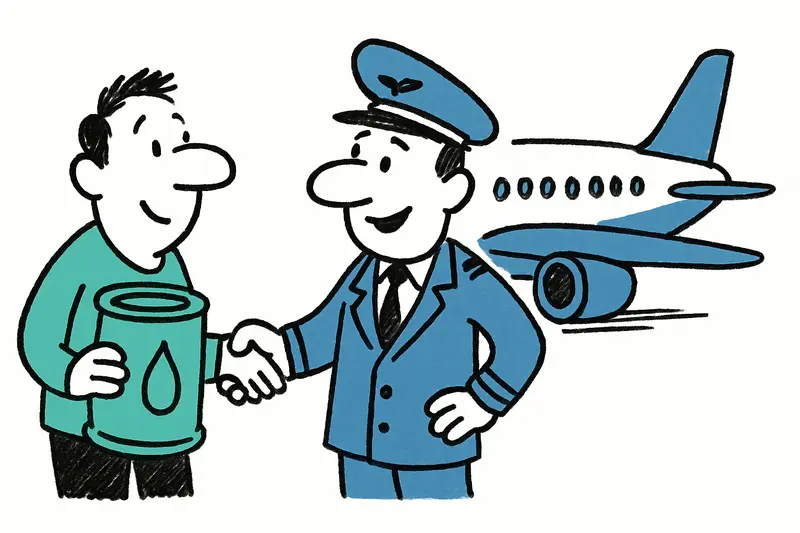An Essen-based company plans a pilot plant at Düsseldorf Airport; Eurowings has secured the first off-take — a step toward greener flying, but with questions still to be answered.
Pilot project in Düsseldorf: Green kerosene from the air?
At Düsseldorf Airport, an unusual facility could be built in the coming months: A team from Essen aims to produce power-to-liquid aviation fuel that captures CO₂ from the surrounding air and, together with green hydrogen, converts it into synthetic kerosene. Eurowings has, according to the project agreement, committed to purchasing the production for the first three years — a clear sign of interest, but not a free pass.
How does it work according to the plan?
The technology is called Power-to-Liquid: Electricity drives electrolysis and other chemical steps; CO₂ is drawn directly from the atmosphere (Direct Air Capture) and, together with green hydrogen, is processed into SAF, i.e., Sustainable Aviation Fuel. Part of the required electricity is to come from a nearby photovoltaic plant. Sounds clean — but in practice many hurdles remain to be overcome.
The planned pilot capacity is around 150 tonnes per year. According to calculations, that would suffice for only a few dozen round trips between Düsseldorf and Mallorca, considering the currently possible blending of up to 50 percent. Practically: good for a real-world testbed. Commercially: far from enough.
Why the project is still important
Such real-world labs show whether the processes operate technically stably and where costs and energy efficiency lie. The developers hope that insights from the Düsseldorf trial pave the way to larger facilities. In conversations with technicians, I heard that scaling is often the real test: more capacity, better cost structure, more locally produced green electricity.
At the same time, the price gap is large: electricity-based SAF is currently often more expensive than fossil fuels. Without cheap renewable energy sources and supportive policy conditions, deployment and diffusion remain limited. Nevertheless: for an island route like Düsseldorf–Mallorca, such a project can send a visible signal.
A small personal impression: On the forecourt of the airport yesterday, an older man stood and waved to his son, who was heading toward the plane. These stories show me that flying remains part of our everyday life. If the fuel becomes more sustainable in the process, it's a step in the right direction — even if it's not yet big enough.
Similar News

Mallorca's service providers brace for a lean winter as businesses plan earlier closures
After a weaker summer, many restaurants, bars and shops on Mallorca expect lower off-season revenues. Higher levies and ...

Playa de Palma's Party Strip: Tourists Celebrate – Many Locals Struggle for Money
El Arenal is full of sun umbrellas and sangria, yet the district ranks among Palma's poorest areas. A look behind Playa ...

Palma's Metro to Son Espases Hospital Extended
Balearic Islands president Marga Prohens has announced that the Palma metro line will be extended to Son Espases Hospita...

Imserso sale starts: Senior trips to the Balearic Islands now bookable
From 9:00 AM retirees can book the Imserso trips to the Balearic Islands. Few places, new discounts — and pets allowed f...

When One Job Isn't Enough: Why Many in Mallorca Need Two or More Jobs
On Mallorca, many people take on multiple jobs to cope with rising rents and living costs. A look at reasons and consequ...
